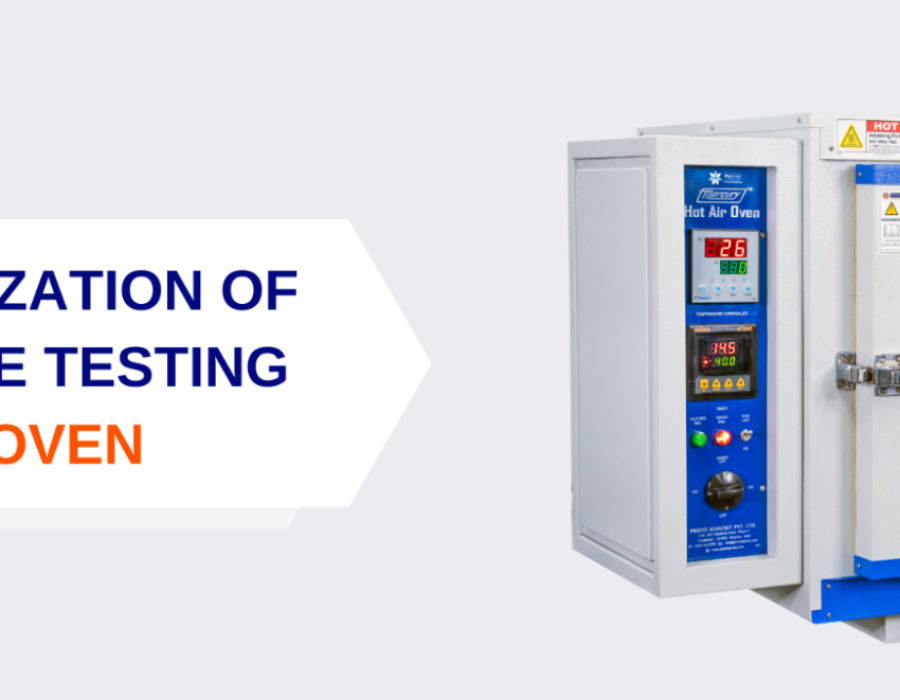In the microbiology industry, maintaining a sterile environment and ensuring accurate results is paramount. One of the key tools aiding in this endeavor is the hot air oven. This piece of equipment is indispensable for various processes such as sterilization, drying, and quality control. Understanding how hot air ovens work and their applications can shed light on why they are so vital to microbiological practices.
What is a Hot Air Oven?
A hot air oven is a laboratory instrument that uses dry heat to sterilize and decontaminate laboratory equipment, glassware, and other items. Unlike autoclaves that use steam, hot air ovens rely on high temperatures generated by electric heating elements. The typical temperature range for a hot air oven is between 50°C to 300°C, which can be precisely controlled to meet specific requirements.
How Does a Hot Air Oven Work?
The hot air oven operates by circulating hot air throughout its chamber. Here’s a brief overview of its working principle:
- Heating Elements: Electric heaters are the primary source of heat in a hot air oven. These elements heat up the air inside the chamber.
- Air Circulation: Fans within the oven ensure uniform distribution of hot air, maintaining a consistent temperature throughout the chamber.
- Thermostatic Control: Thermostats regulate the temperature, allowing precise control over the heating process.
- Insulation: Proper insulation keeps the heat contained within the chamber, ensuring efficient energy use and safety.
Applications of Hot Air Ovens in Microbiology
Hot air ovens are utilized in various microbiological applications, each critical to maintaining the integrity and accuracy of laboratory work.
- Sterilization: One of the primary uses of hot air ovens is the sterilization of glassware, metal instruments, and other heat-resistant materials. Sterilization is essential to eliminate any microbial contamination, ensuring that experiments are not compromised.
- Drying: Hot air ovens are also used to dry laboratory glassware and instruments. After washing, it is crucial to remove all moisture to prevent any potential microbial growth. The dry heat method ensures complete removal of moisture without leaving any residues.
- Quality Control: In microbiology, it is vital to ensure that materials and equipment meet strict standards. Hot air ovens are used for quality control processes, such as testing the heat resistance of materials or evaluating the stability of compounds at high temperatures.
- Incubation: Some microbiological processes require incubation at specific temperatures. Hot air ovens can maintain these temperatures for prolonged periods, supporting various incubation processes.
Benefits of Using Hot Air Ovens
The use of hot air ovens in the microbiology industry offers several significant advantages:
- Efficiency: Hot air ovens provide efficient sterilization and drying, essential for maintaining a sterile environment in the lab.
- Precision: The ability to control temperatures precisely ensures that all processes are conducted under optimal conditions, leading to accurate results.
- Versatility: Hot air ovens can be used for multiple purposes, from sterilization to drying and incubation, making them highly versatile tools in the laboratory.
- Safety: With proper insulation and temperature control, hot air ovens are safe to use, minimizing the risk of burns or other injuries.
Choosing the Right Hot Air Oven
When selecting a hot air oven for microbiological applications, several factors should be considered:
- Size and Capacity: Depending on the volume of items to be sterilized or dried, choose an oven with adequate capacity.
- Temperature Range: Ensure that the oven can reach and maintain the required temperatures for your specific applications.
- Uniformity and Accuracy: Look for ovens with reliable temperature control and uniform heat distribution to guarantee consistent results.
- Quality and Durability: Invest in a high-quality hot air oven from a reputable manufacturer to ensure long-term reliability and performance.
Conclusion
Hot air ovens are indispensable in the microbiology industry, playing a crucial role in sterilization, drying, and quality control processes. Their ability to maintain sterile conditions and ensure the integrity of experimental results makes them a vital component of any microbiological laboratory. By understanding their functionality and applications, laboratories can leverage hot air ovens to enhance their operational efficiency and accuracy, ultimately contributing to the advancement of microbiological research and applications.






Comments